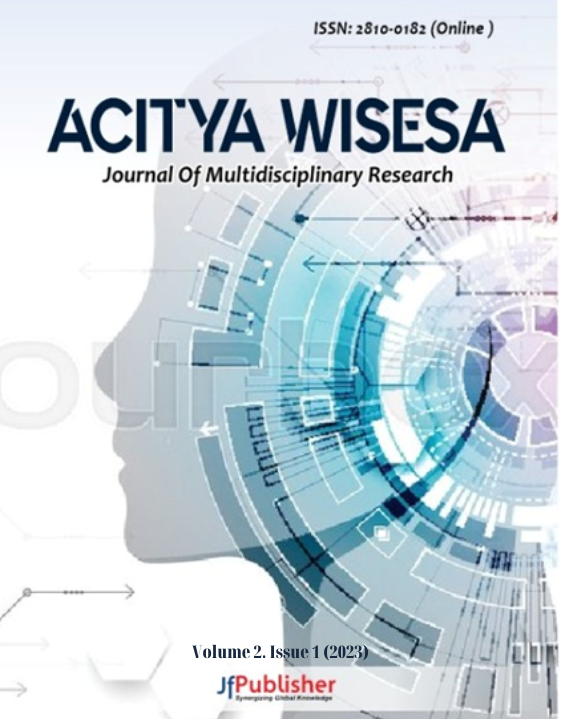COMPARATIVE STUDY ON NUTRITIONAL AND ANTI NUTRITIONAL COMPOSITION OF FRESH AND DRIED OKRA OBTAINED FROM GUSAU MARKET NIGERIA
Federal Polytechnic Kaura Namoda
Federal Polytechnic Kaura Namoda
Federal Polytechnic Kaura Namoda
Federal Polytechnic Kaura Namoda
DOI:
https://doi.org/10.56943/jmr.v2i1.230Okra or commonly known in its Latin as abelmoschus esculentus are one of the green vegetables that is most consumed around the world and is utilized as medicine. Due to post-harvest losses, inadequate storage facilities lead to customers losing fresh okra. Therefore, farmers use traditional drying preservation methods by utilizing solar heat. The research objectives is to identify and evaluate the antinutrient, mineral, and proximate compositions of fresh and dried okra obtained from Gusau Market in Nigeria. Researchers analyzed and compared the samples using standard analytical methods and statistical packages from IBM SPSS version 21. The analysis revealed that the fresh and dried okra samples had the following amounts of water, ash, protein, fiber, carbs, lipids, and total energy: 75.30-8.56%; 1.85-8.05%; 16.44-77.25%; 4.30-2.03%; 0.18-3.15%; 1.93-0.96%; and 56.11-325.76%. While concentrations of mineral elements of fresh and dried okra are 98.22-97.80; 5.45-4.45; 9.75-9.35; 78.52-69.35; 21.36-19.26; and 30.52-29.60 in mg/100g respectively. The phytochemical screening shows the presence of Tannin, Oxalate, Phytate, Saponin, Phenolic, Flavonoid and Alkaloid. For sampling of fresh and dried okra, the amounts of flavonoid and alkaloid in mg/100g are 18.6-17.95 and 10.64-15.14, respectively. There is no significance different in proximate, mineral elements and anti nutritional content between fresh and dried okra samples. Therefore, the researchers can decide that the traditional way by utilizing solar heat is still being utilised by most of farmers. The appropriate method for farmers to prevent lossing okra when post-harvest is having conducive environment for them in order to avoid possible contamination.
Keywords: Mineral Contents Okra Phytochemicals Proxim
Agomuo, J. K., Nasiru, B. U., & Ifeka, C. (2022). Effect of Different Drying Methods on the Nutritional and Sensory Attributes of Abelmoschus Esculentus (okra). FUDMA JOURNAL OF SCIENCES, 6(3), 70–75. https://doi.org/10.33003/fjs-2022-0603-971
AOAC. (2017). Official method of Analysis of Association of Analytical Chemists Intrnational (17th Editi). Horowitz.
Assi, O., Sidibe, D., Konan, Y., Coulibaly, A., Mahan, R., & Biego, H. (2017). Viscosity Study of Mucilages Extracted from Abelmoschus esculentus, Beilschmiedia mannii, Corchorus olitorius and Irvingia gabonensis from Côte d’Ivoire. Journal of Applied Life Sciences International, 11(1), 1–14. https://doi.org/10.9734/JALSI/2017/32378
Chukwuma, C. I., Islam, M. S., & Amonsou, E. O. (2018). A comparative study on the physicochemical, anti-oxidative, anti-hyperglycemic and anti-lipidemic properties of amadumbe ( Colocasia esculenta ) and okra ( Abelmoschus esculentus ) mucilage. Journal of Food Biochemistry, 42(5), e12601. https://doi.org/10.1111/jfbc.12601
Combo, A. M.-M., Dakia, P. A., Niaba, K. P. V., Traoré, N., & Beugré, G. A. M. (2020). Assessment of Chemical Composition and Nutritional Value of Some Varieties of Okra Available in the Market of Daloa (Côte d’Ivoire). Asian Journal of Agriculture and Food Sciences, 8(3). https://doi.org/10.24203/ajafs.v8i3.6155
Dubey, P., & Mishra, S. (2017). A review on: Diabetes and okra (Abelmoschus esculentus). Journal of Medicinal Plants Studies, 5(3), 23–26.
Fekadu Gemede, H. (2015). Nutritional Quality and Health Benefits of “Okra” (Abelmoschus esculentus): A Review. International Journal of Nutrition and Food Sciences, 4(2), 208. https://doi.org/10.11648/j.ijnfs.20150402.22
Gemede, H. F., Haki, G. D., Beyene, F., Woldegiorgis, A. Z., & Rakshit, S. K. (2016). Proximate, mineral, and antinutrient compositions of indigenous Okra ( Abelmoschus esculentus ) pod accessions: implications for mineral bioavailability. Food Science & Nutrition, 4(2), 223–233. https://doi.org/10.1002/fsn3.282
Kouassi, J. B., Massara, C.-C., Monde, A. A., Tiahou, G. G., Sess, D. E., & Vama, E. T. (2013). Comparative Study of Proximate Chemical Composition of Two Varieties of Okra Dried by Two Methods: Sun and Electric Drying. American Journal of BioScience, 1(4), 74–79.
Ladi, O. J., Awod, Y. P., Obogeh, K. A., & Alfa, I. N. (2017). Effect of Drying Methods and Storage Conditions on Nutritional Value and Sensory Properties of Dehydrated Tomato Powder (Lycopersicon esculentum). International Journal of Biochemistry Research & Review, 19(1), 1–7. https://www.researchgate.net/profile/Ladi-Opega/publication/319864272_Effect_of_Drying_Methods_and_Storage_Conditions_on_Nutritional_Value_and_Sensory_Properties_of_Dehydrated_Tomato_Powder_Lycopersicon_esculentum/links/5ad9e439a6fdcc293586e852/Effect-of-
Maria, E. E. C., Luciana, M. P. de S., Elba, dos S. F., Amanda, P. de F., Carlos, A. de A. G., Jailane, de S. A., & Tatiane, S.-G. (2015). Nutritional, antinutritional and phytochemical status of okra leaves (Abelmoschus esculentus) subjected to different processes. African Journal of Biotechnology, 14(8), 683–687. https://doi.org/10.5897/AJB2014.14356
Maturahmah, E., Revisika, Rahmi, E., & Sandy, G. A. (2022). The Utilization of Medicine Plants in Amban Residents in Increasing Knowledge Towards Herbal Treatment. LUX MENSANA: Journal of Scientific Health, 1(1). https://journal.jfpublisher.com/index.php/jsh/article/view/31
Nair, B. R., & Fahsa. (2013). Isolation and characterization of mucilage from some selected species of Abelmoschus medik (malvaceae) and their application in pharmaceutical suspension preparation. International Journal of Pharmacy and Pharmaceutical Sciences, 5(1), 398–402.
Omoniyi, S. A., Idowu, M. A., Francis, P. N., & Adeola, A. A. (2021). Nutrient Composition and Functional Properties of Okra Seed Flour and Some Quality Attributes of its Soups. Journal of Culinary Science & Technology, 19(4), 285–293. https://doi.org/10.1080/15428052.2020.1759169
Perez, J. R. T., Baritua, R. J., Pacalna, M. O., & Jr, S. O. M. (2013). Exploratory Investigation on the Hypoglycemic Effect of Abelmoschus Esculentus in Mice. International Journal of Scientific and Technology Research, 2(11), 249–253.
Shuaibu, M. (2022). Comparative Analysis on Nutritional and Anti Nutritional Composition of Fresh and Dried Tomatoes Obtained from Gusau Central Market Zamfara State, Nigeria. Asia Journal of Applied Chemistry Research, 12(3), 8–14.
W, D. P., Hasanah, S. U., Sukrasno, & Hartati, R. (2022). Effect of Tempe Processing on Genistein Content. SIMPLISIA: Journal of Pharmaceutical and Biology, 1(1). https://journal.jfpublisher.com/index.php/jpb/article/view/212

